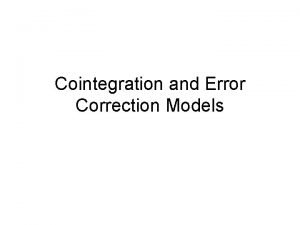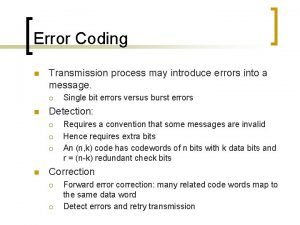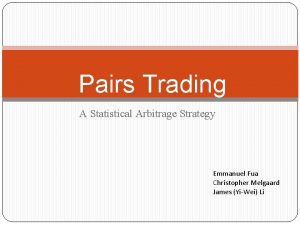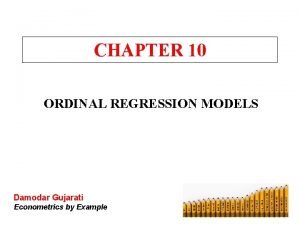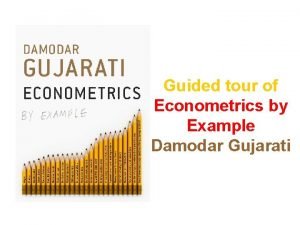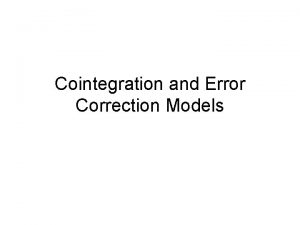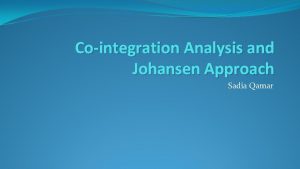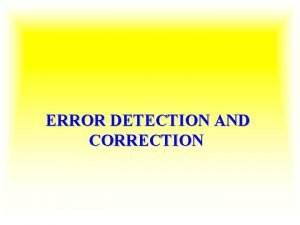CHAPTER 14 COINTEGRATION AND ERROR CORRECTION MODELS Damodar





- Slides: 5

CHAPTER 14 COINTEGRATION AND ERROR CORRECTION MODELS Damodar Gujarati Econometrics by Example, second edition

COINTEGRATION Ø There is a unique case where a regression of a nonstationary series on another nonstationary series does not result in spurious regression. Ø This is the situation of cointegration. Ø If two time series have stochastic trends (i. e. they are nonstationary), a regression of one on the other may cancel out the stochastic trends, which may suggest that there is a long-run, or equilibrium, relationship between them even though individually the two series are nonstationary. Ø Keep in mind that unit root and nonstationarity are not synonymous. A stochastic process with a deterministic trend is nonstationary but not unit root. Damodar Gujarati Econometrics by Example, second edition

TESTS OF COINTEGRATION Ø Engle-Granger (EG) and augmented Engle-Granger (AEG) tests Ø In the context of testing for cointegration, the Dickey-Fuller (DF) and augmented Dickey-Fuller (ADF) tests are known as Engle. Granger (EG) and augmented Engle-Granger (AEG) tests, which are now incorporated in several software packages. Ø Shortcomings of the EG methodology Ø If you have more than three variables, there might be more than one cointegrating relationship. Ø Once we go beyond two time series, we will have to use Johansen methodology to test for cointegrating relationships among multiple variables. Damodar Gujarati Econometrics by Example, second edition

UNIT ROOT TESTS AND COINTEGRATION TESTS Ø Tests for unit roots are performed on single time series, whereas cointegration deals with the relationship among a group of variables, each having a unit root. Ø It is better to test each series for unit roots, as some of the series in a group may have more than one unit root, in which case they will have to be differenced more than once to make them stationary. Ø If two time series Y and X are integrated of different orders then the error term in the regression of Y and X is not stationary and this regression equation is said to be unbalanced. Ø On the other hand, if the two variables are integrated of the same order, then the regression equation is said to be balanced. Damodar Gujarati Econometrics by Example, second edition

COINTEGRATION AND ERROR CORRECTION MECHANISM (ECM) Ø Granger Representation Theorem: If two variables Y and X are cointegrated, the relationship between the two can be expressed as an error correction mechanism (ECM). Ø The ECM postulates that changes in the dependent variable depend on changes in the independent variable and the lagged equilibrium error term, ut-1. Ø If this error term is zero, there will not be any disequilibrium between the two variables and in that case the long-run relationship will be given by the cointegrating relationship. Ø But if the equilibrium error term is nonzero, the relationship between the two variables will be out of equilibrium. Ø For multiple time series, we need to use the vector error correction model (VECM). Damodar Gujarati Econometrics by Example, second edition
